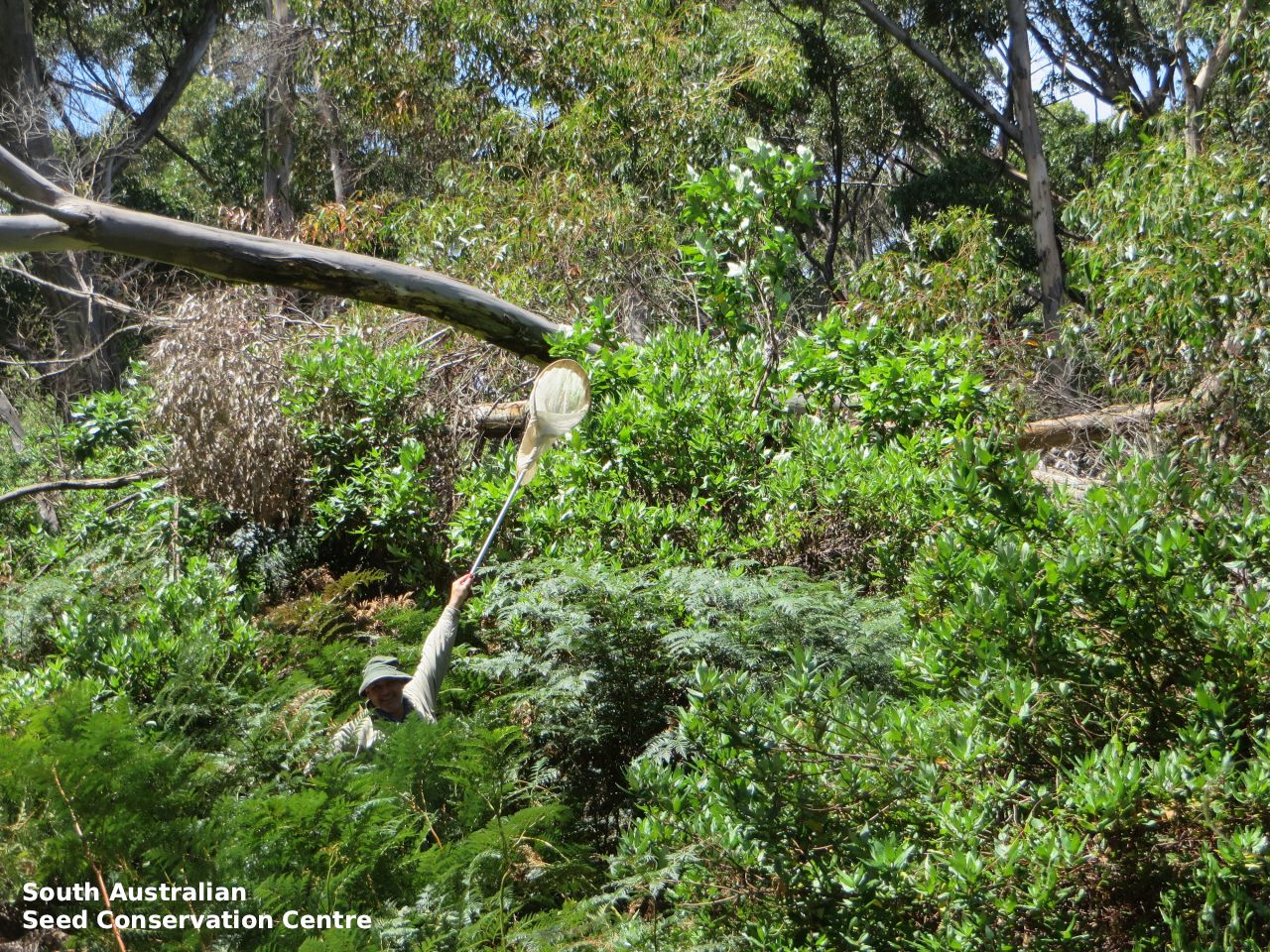
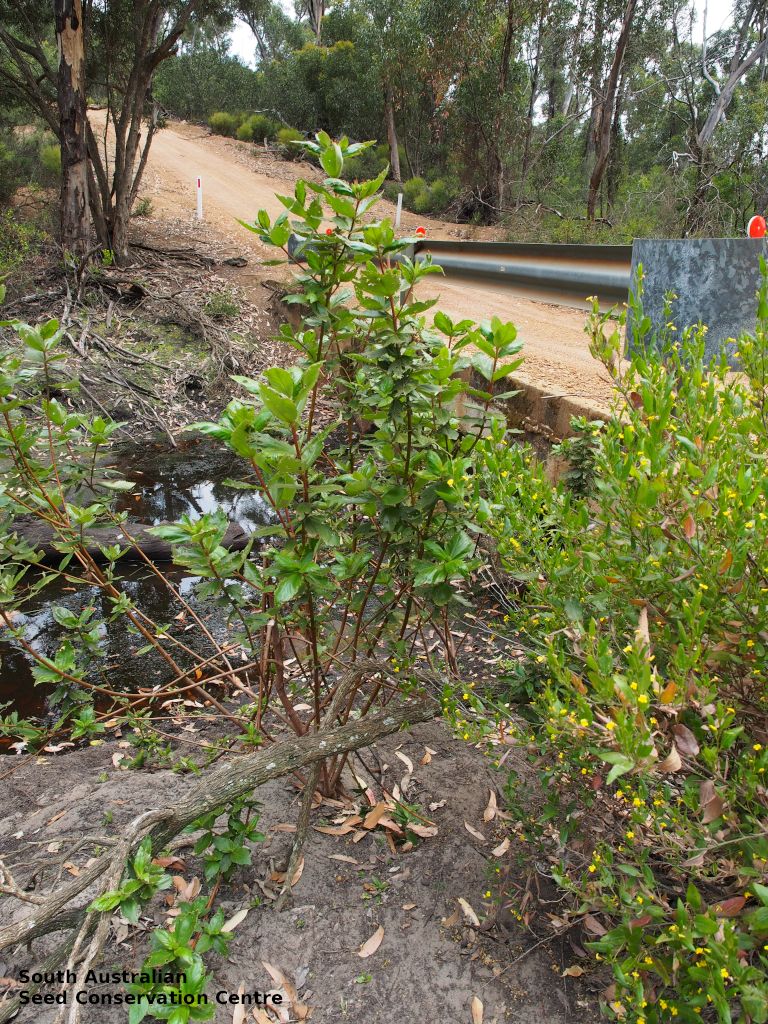
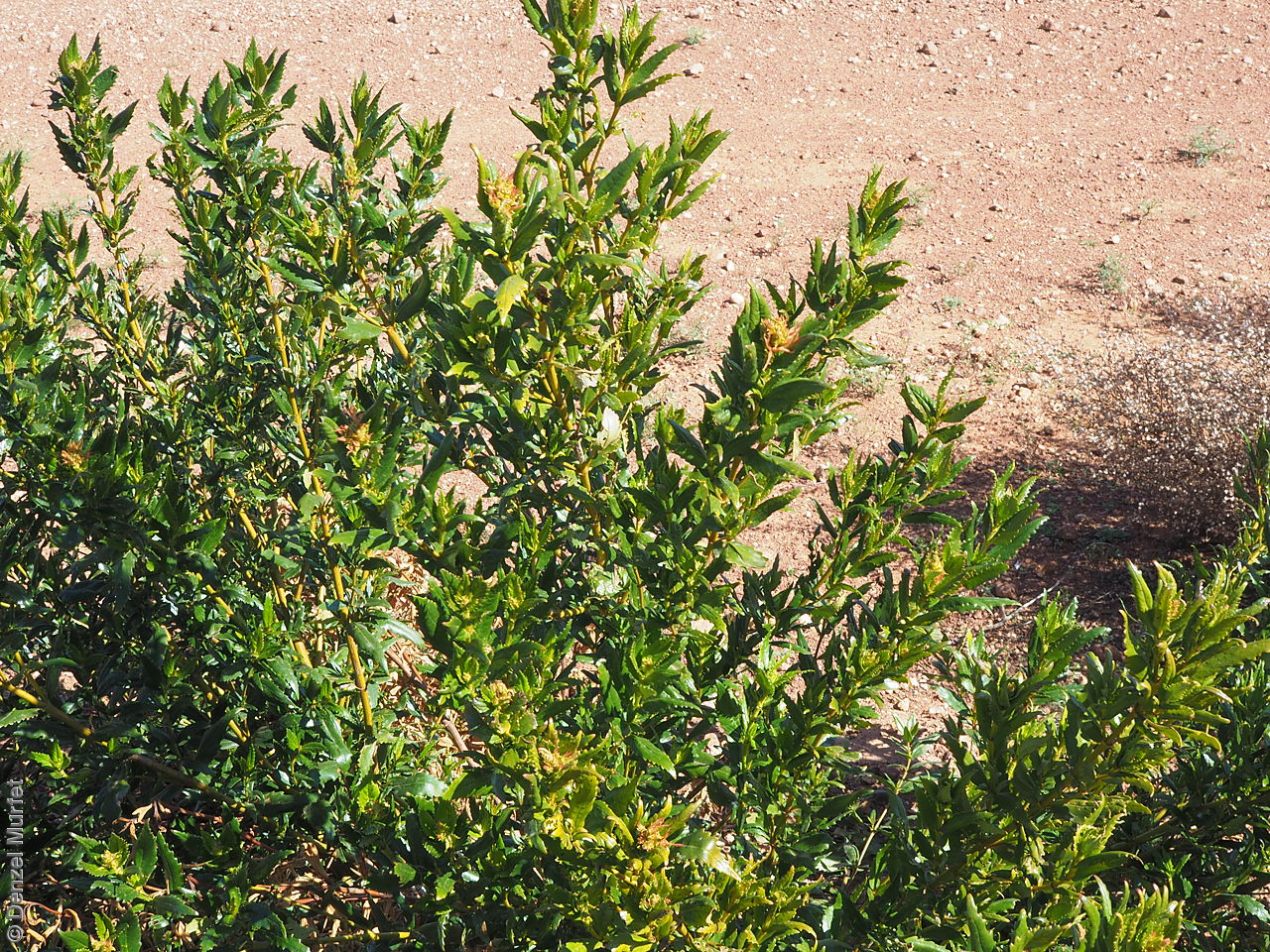


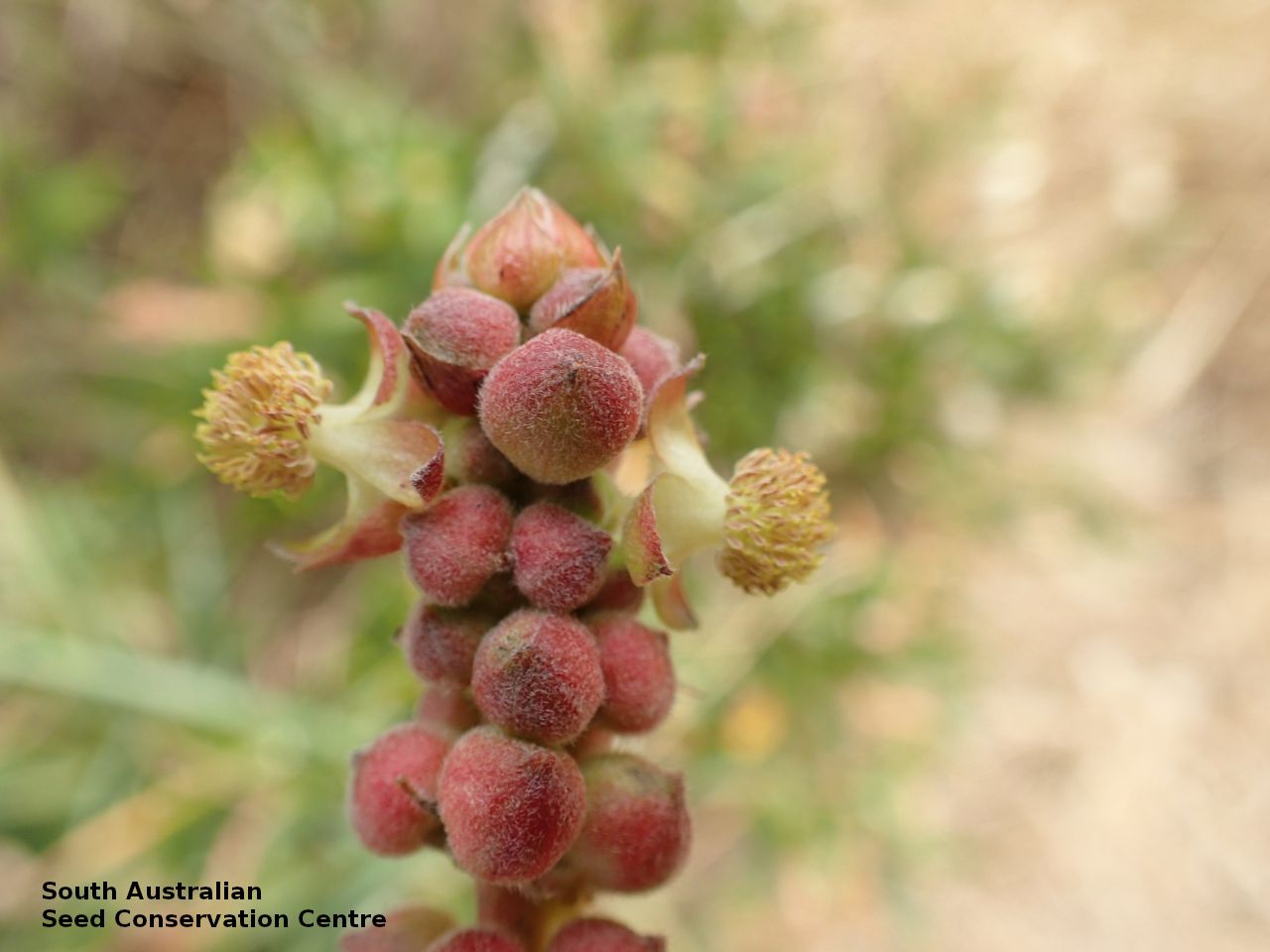
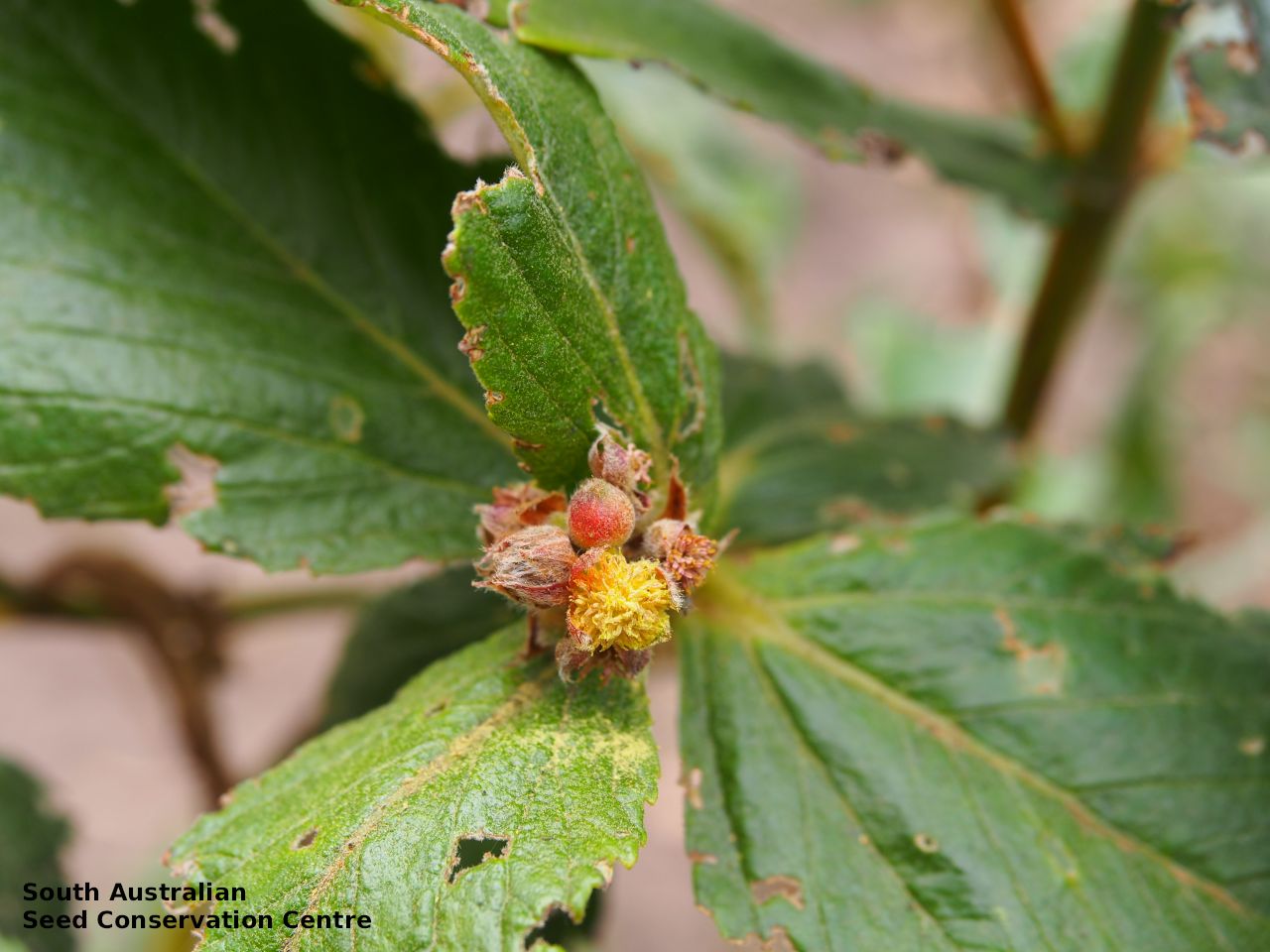

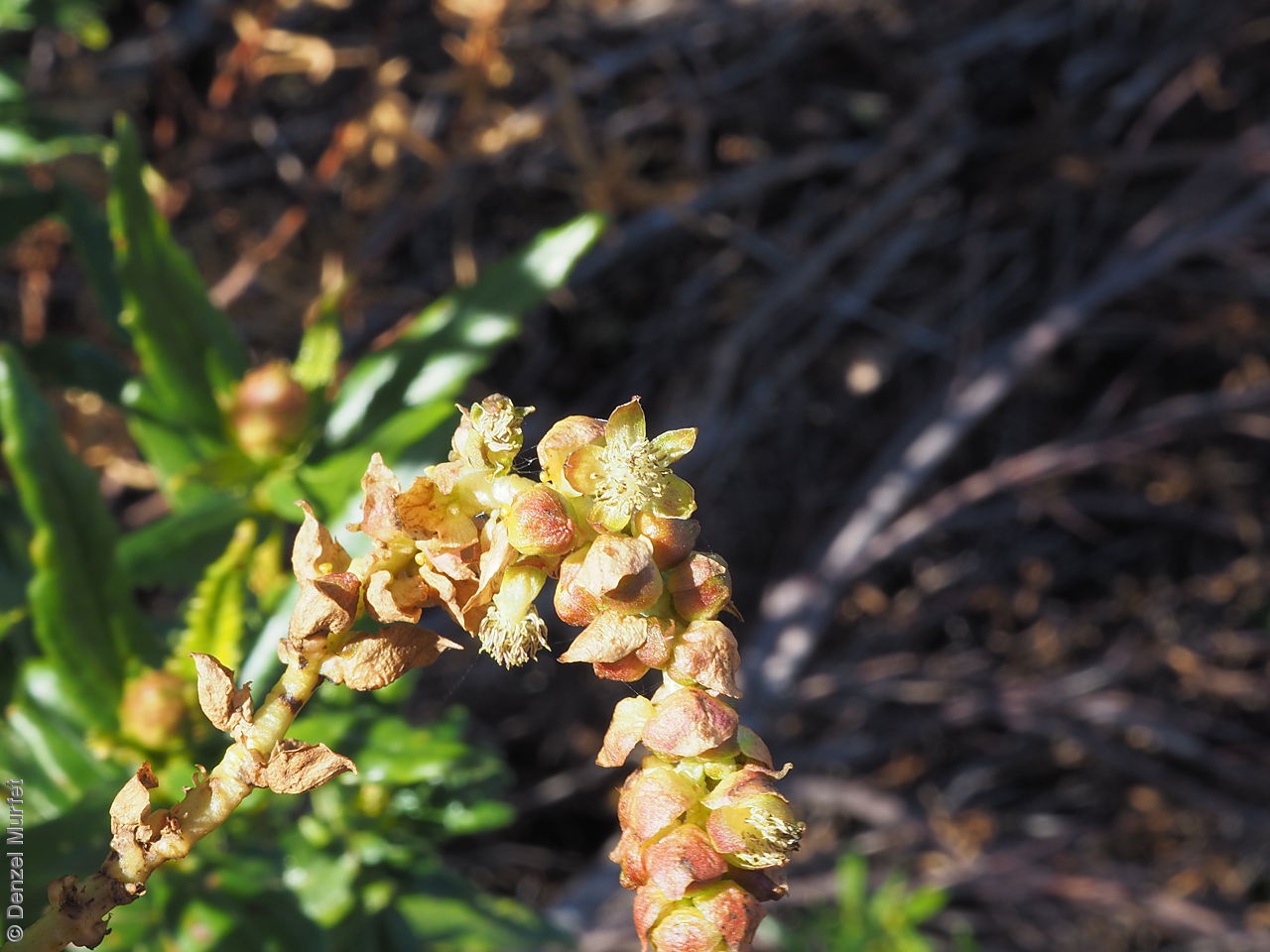
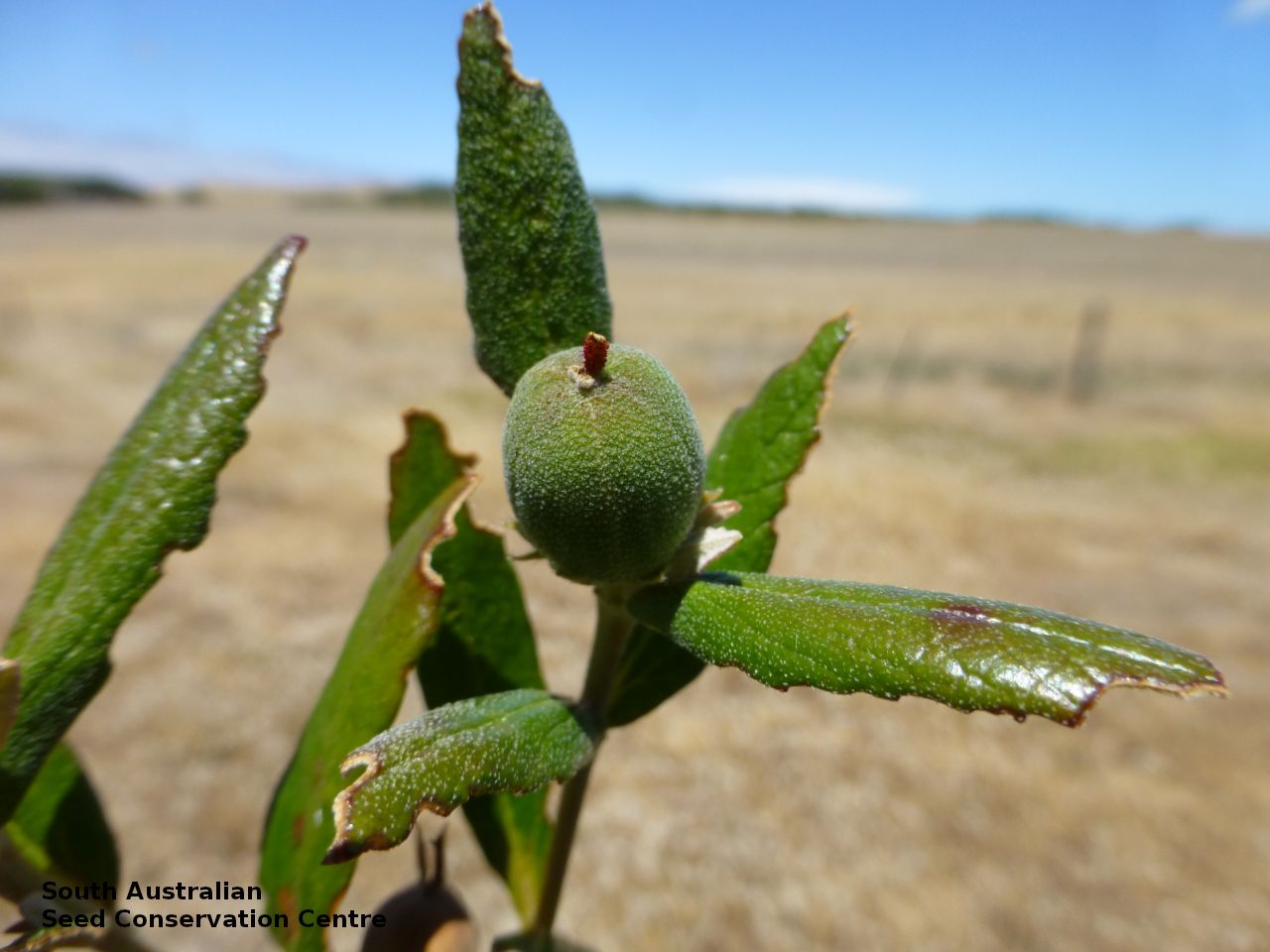

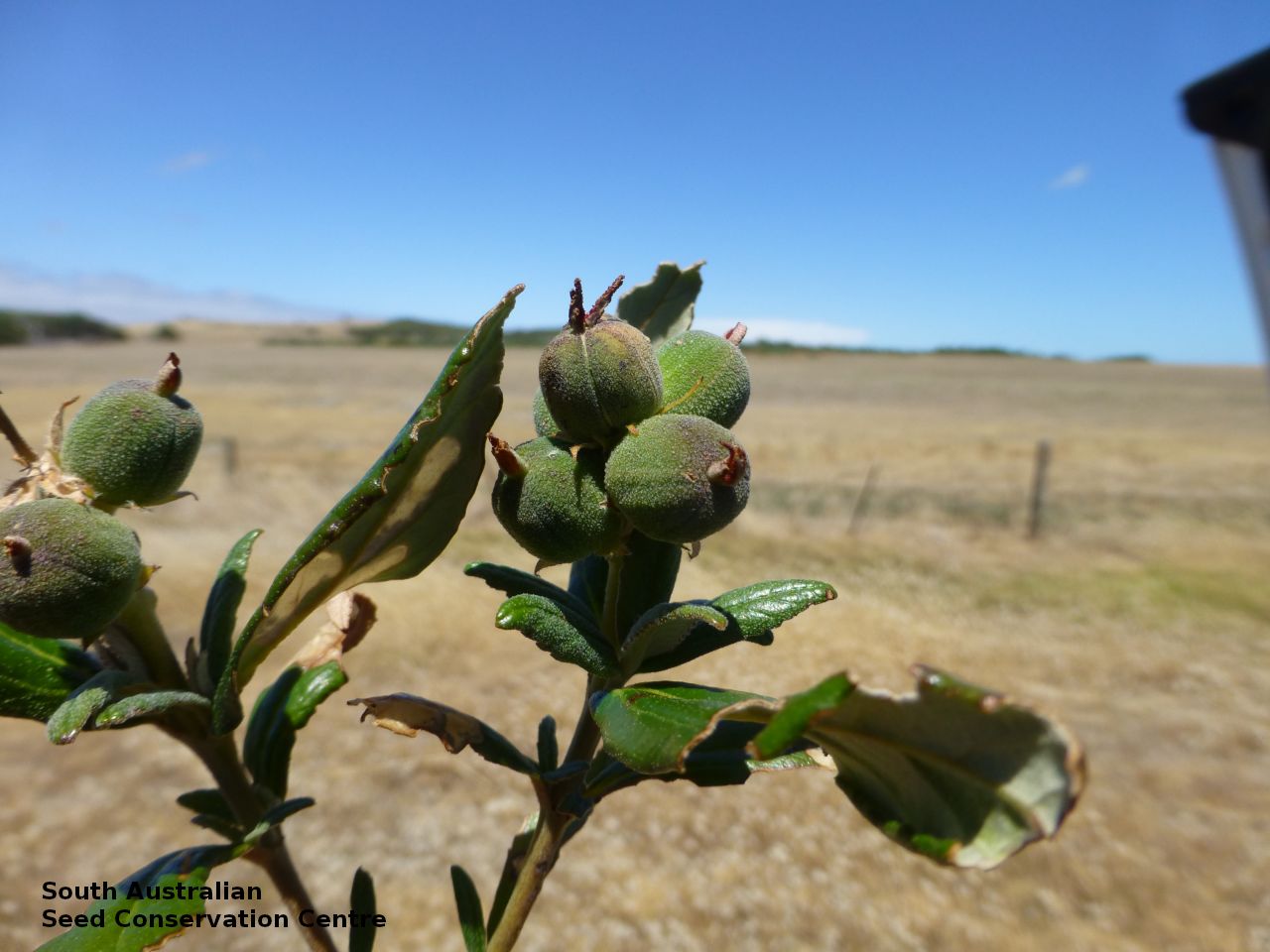

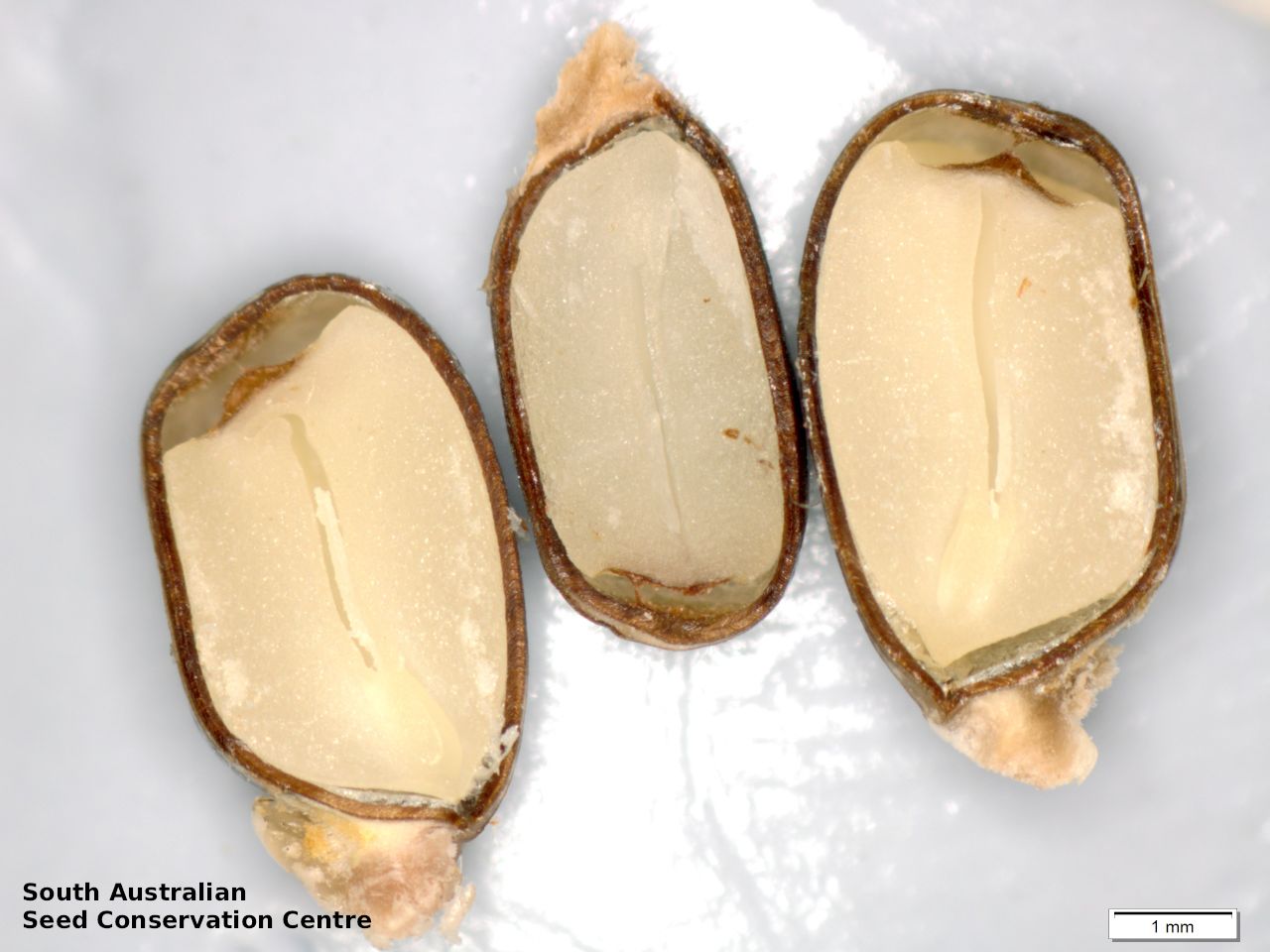
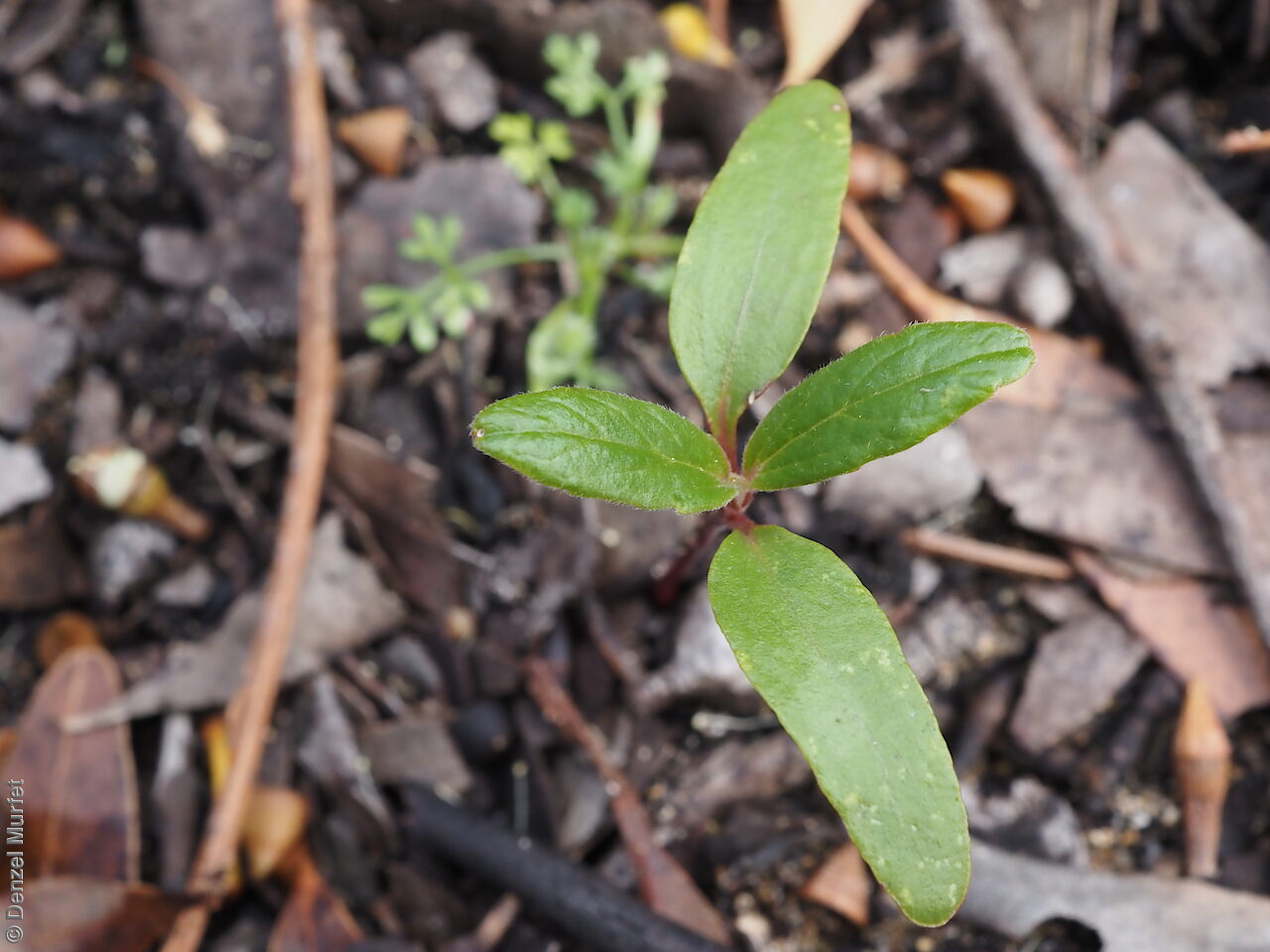

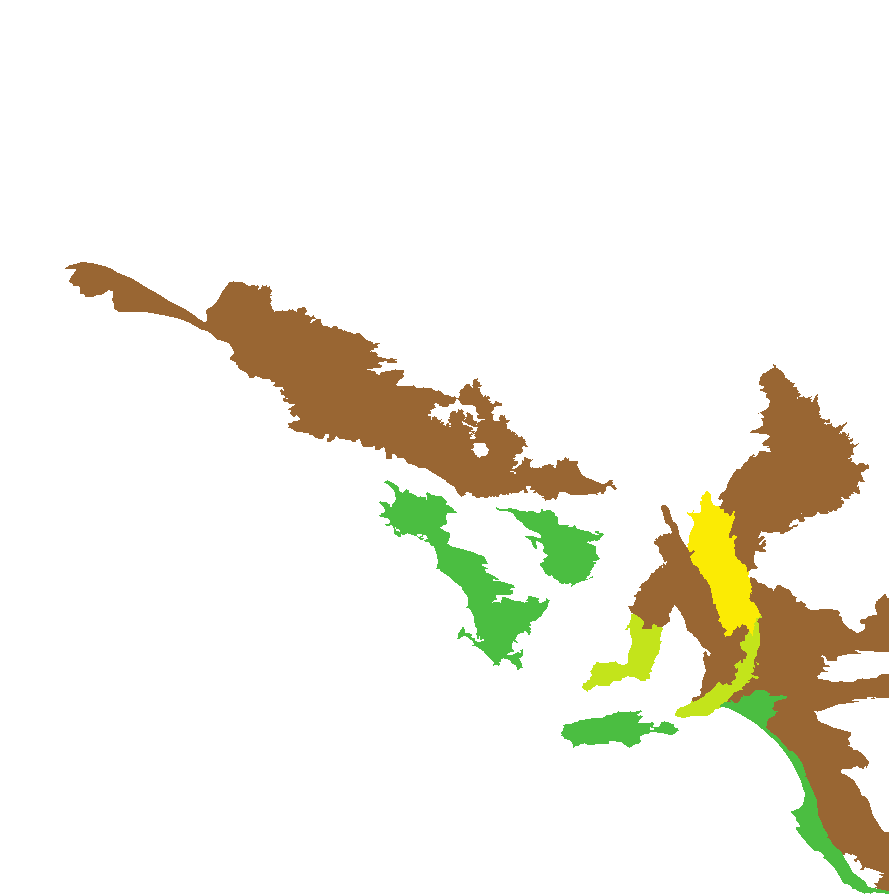
Botanical art
Prior names
Trachycaryon klotzschii
Adriana klotzschii
Croton quadripartitus
Common names
Coast Bitter-bush
Etymology
Adriana named after Adrien-Henri de Jussieu (1797-1853), a French botanist. Quadripartita from the Latin 'quadri' meaning four and 'partita' meaning parts, referring to the calyx with 4 sepals.
Distribution and status
Found in coastal regions of South Australia in sandy soil often associated with calcrete, in open or disturbed coastal areas. Uncommon on the West Coast of South Australia. Also found in Western Australia and Victoria. Native. Common in South Australia. Common in the other States.
Herbarium regions: Flinders Ranges, Eastern, Eyre Peninsula, Northern Lofty, Murray, Yorke Peninsula, Southern Lofty, Kangaroo Island, South Eastern, Green Adelaide
AVH map: SA distribution map (external link)
Plant description
Erect open, much branched shrub to 3 m high. Leaves opposite, subsessile, lanceolate to 8 cm long and 2 cm wide. Separate male and female plants. Inflorescence a spike, male reddish, 25 flowered to 10 cm long and female first red then yellowish-green, 3-5 flowered to 5 cm long. Calyx of 4 ovate-lanceolate sepals yellow to green to 6 mm long and 2.5 mm wide. Flowers between June and February. Fruits are brown ovoid capsule to 10 mm long. Seeds are brown or mottled brown, ovoid to 6 mm long and 4 mm wide. Seed embryo type is spathulate.
Seed collection and propagation
Collect seeds between November and April. Collect ripe fruits when they become dull in colour and seeds are mature, hard. Keep a close eye on maturing fruit as it will open and release the seeds quickly. Place the fruits in a paper bag and leave to dry for 1 to 2 weeks, until they split. Then rub the capsules gently by hand to dislodge the seeds. Use a sieve to separate the unwanted material. Store the seeds with a desiccant such as dried silica beads or dry rice, in an air tight container in a cool and dry place. Seed viability can be variable and seeds are prone to predation. Seed viability can be average. This species has physiological dormancy that needs to be overcome for the seed to germinate.
| Location | No. of seeds (weight grams) | Number of plants | Date collected | Collection number Collection location | Date stored | % Viability | Storage temperature |
|---|---|---|---|---|---|---|---|
| BGA MSB | 550 (12.73 g) 1,000 (23.73 g) | 50 | 18-Jan-2006 | DJD352 Southern Lofty | 1-Aug-2006 | 65% | -18°C |
| BGA | 860 (23.34 g) | 50+ | 30-Jan-2013 | JRG49 South Eastern | 27-Feb-2014 | 78% | -18°C |
Number of plants: This is the number of plants from which the seeds were collected.
Collection location: The Herbarium of South Australia's region name.
% Viability: Percentage of filled healthy seeds determined by a cut test or x-ray.